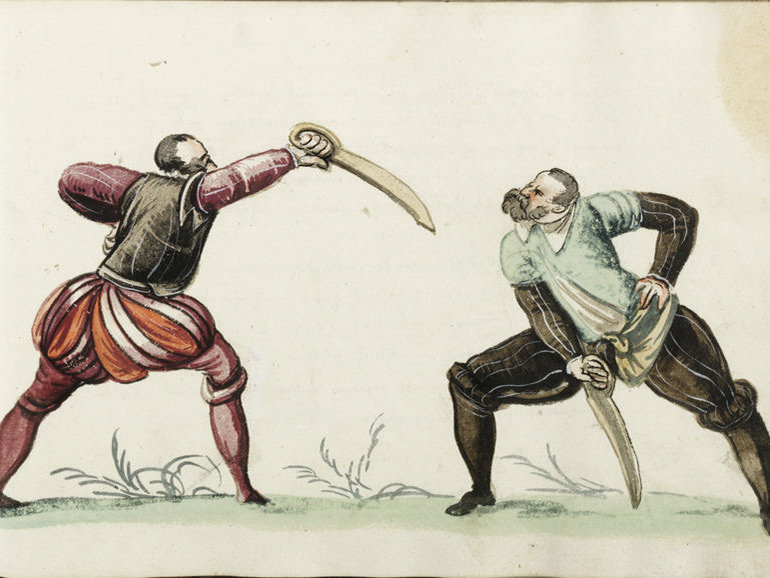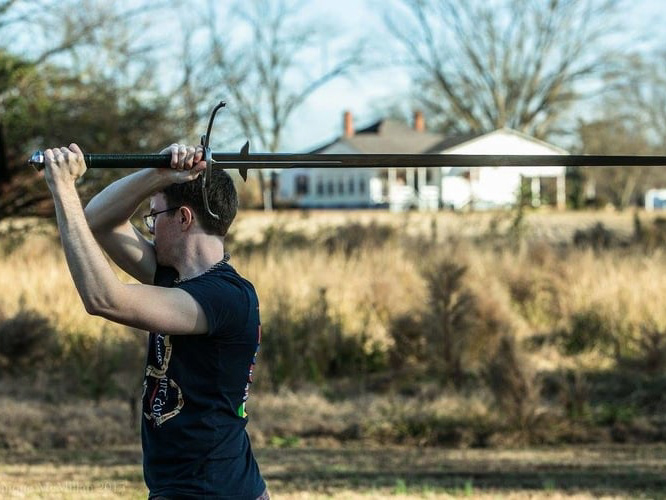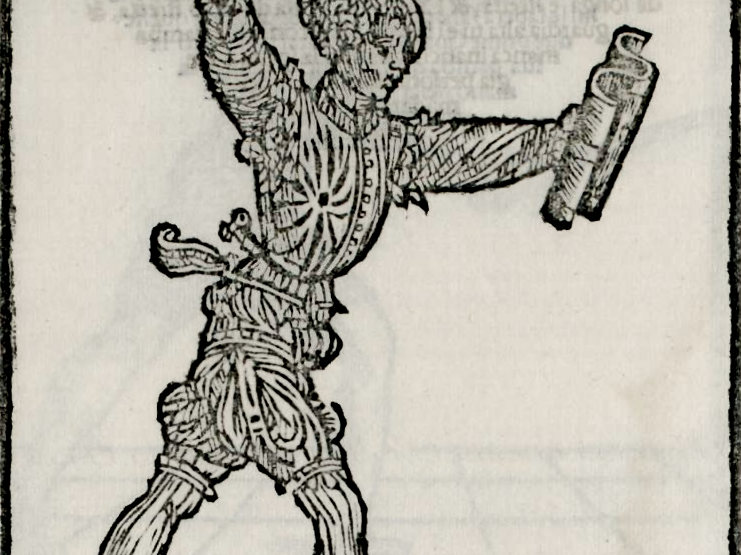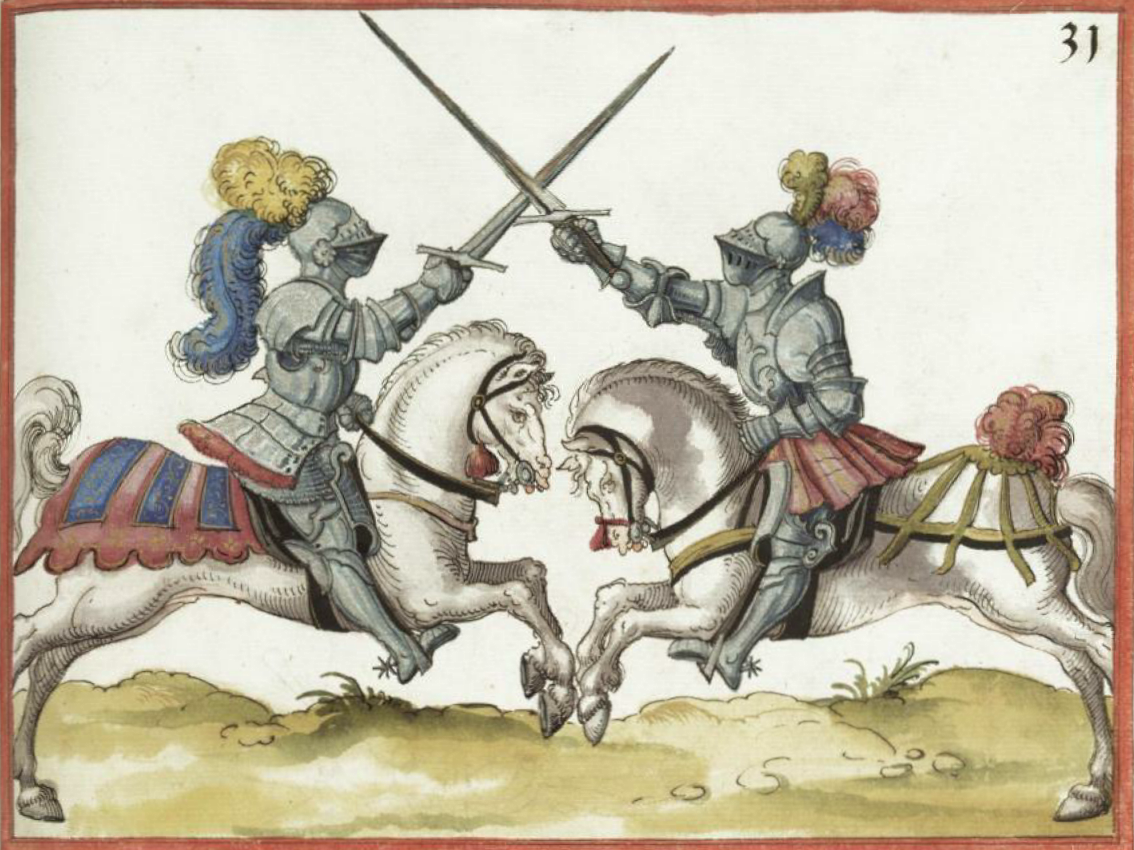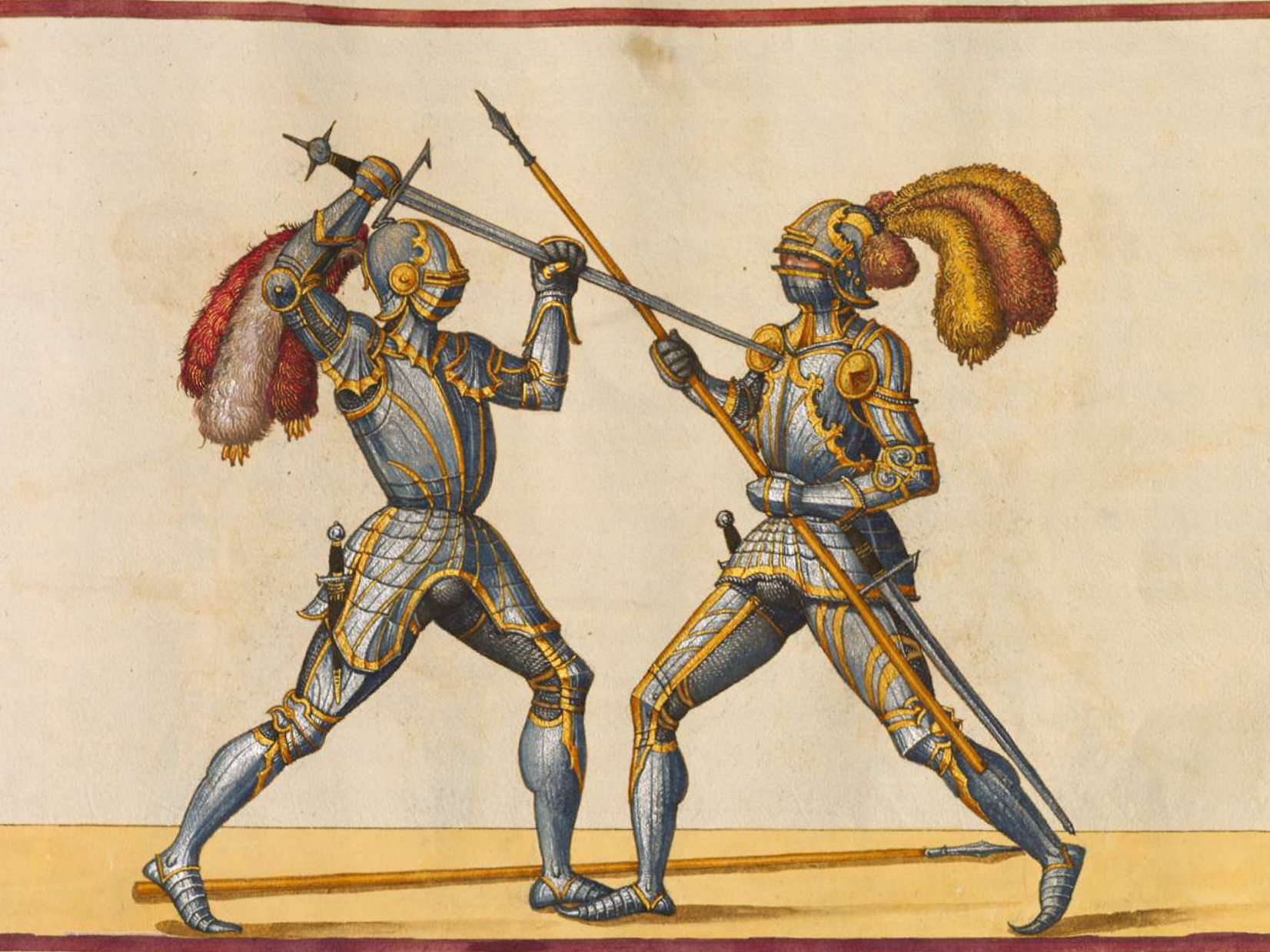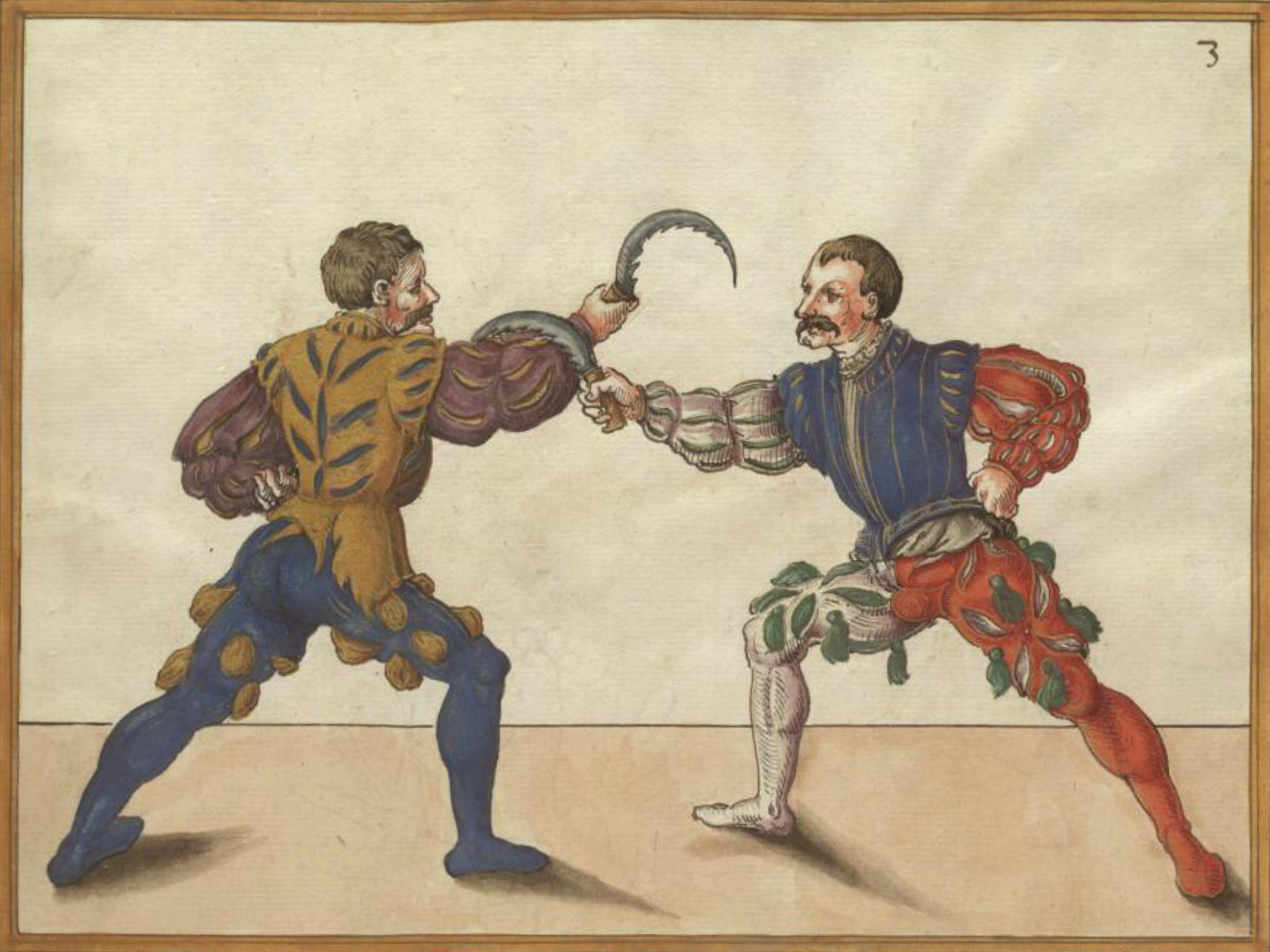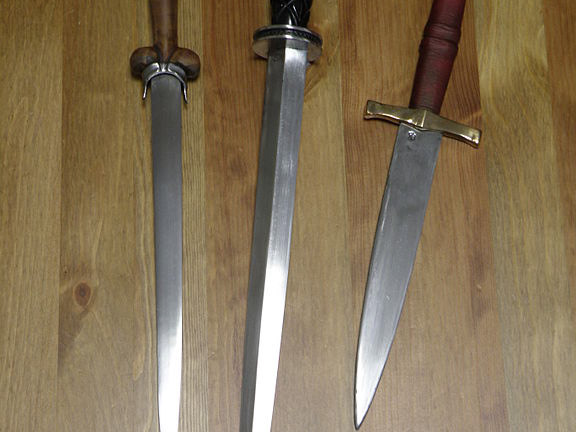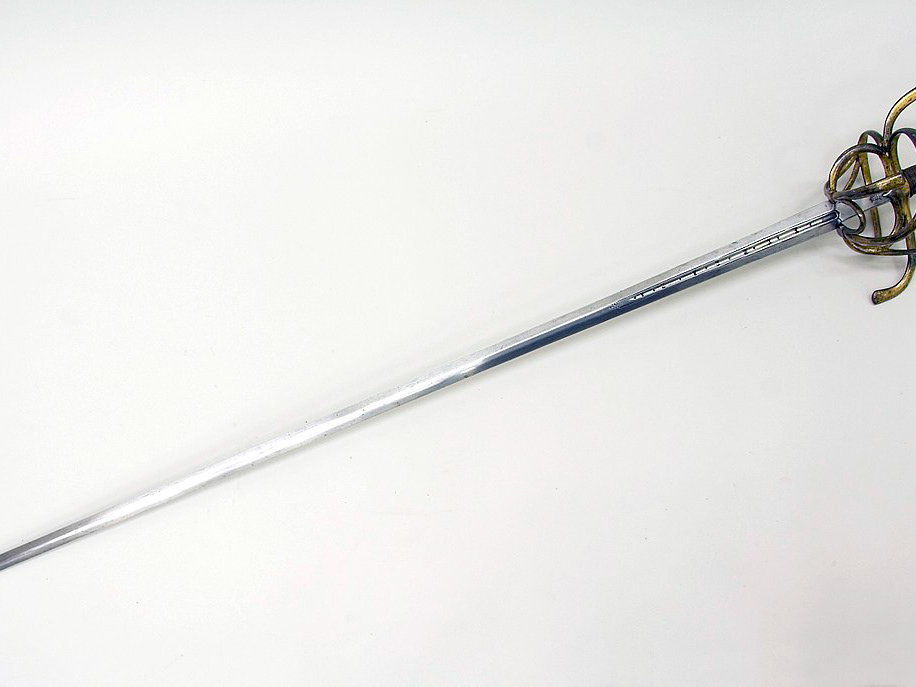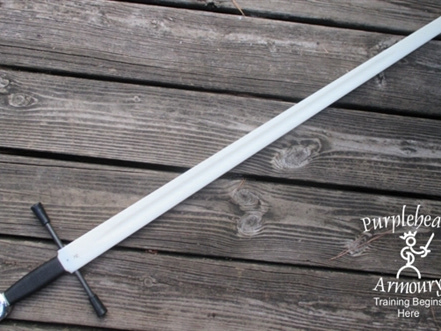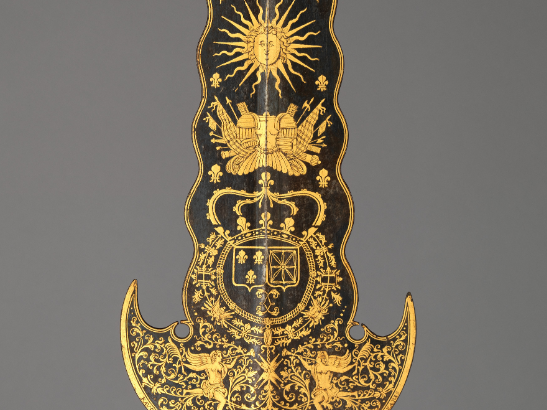Introduction
The messer was very popular in Germany and was subdivided into two types to better differentiate between its various uses. Langes messer ("long knife") was a one-handed, curved blade for civilian use. These were around 40” long and weighed about two to three pounds.[1] Kriegsmessers ("war knife") were made for professional soldiers and were very popular with German infantry. These could be wielded with one or two hands, were about sixty inches long, and weighed around three pounds.[2] [3]
Both types of messers had a spike protruding from the guard called a Nagel (nail), designed to protect the hand and fingers from a bound blade. Aside from the Nagel, other distinguishing characteristics included a distinctive hooked pommel and the full tang with pins securing the grip slabs to the tang.
An example of the Nagel on a one-handed messer. Notice the single edge, full tang hilt construction, and characteristic hooked pommel.
Courtesy of Søren Niedziella.
A breakdown of messer anatomy.
Courtesy of Søren Niedziella, edited by TOTA. (Image modified with anatomical labels).
Designed for war, Kreigsmessers usually had a larger, longer, and thicker blade. They also featured a longer grip, allowing the weapon to be wielded with two hands.
The Albion Knecht messer. Notice the thicker blade, curve, and stout crossguard with a nagle designed for a right-handed user.
Courtesy of Søren Niedziella.
Messer fighting includes many techniques designed to attack an opponent's limbs. The weapon's curved blade and sharp edge allow it to deliver devastating cuts that can cleave through bone and are capable of severing limbs, as illustrated in this play from Hans Talhoffer's Württemberg manuscript, Cod. icon. 394a:
Sources
German
Hans Talhoffer Württemberg manuscript (1467): Talhoffer lived a long and interesting life, as evidenced by his manuscripts, which cover a wide assortment of weapons, including the buckler, crossbow, dagger, flail, Messer, longshield, mace, poleaxe, spear, sword, and unarmed grappling, often both armored and unarmored, on horse and on foot, and in scenarios including tournaments, formal duels, and unequal encounters implying urban self-defense. While his captions are sparse, his messer teachings still encapsulate the system.
Johannes Lecküchner (1470-1480): Lecküchner wrote The Art of Messer Fencing, one of the most detailed messer manuals known to date. It is one of the most definitive sources of German messer plays.
Peter Falkner (1495): Falkner’s messer text is based on the teachings of Lecküchner with additions and alternations. While the explanations of the techniques are cryptic, the entire section is beautifully illustrated.
The Nuremberg Group (1470-1510): The Nuremberg Group is a series of 15th- and 16th-century German manuscripts that describe a common set of techniques and seem to have originated in the area of Nuremberg, Germany. It has been suggested that these treatises define a local martial arts tradition native to that city, which would be a subset of the mainstream German style. It includes several sections on messer and details how to fight dagger vs. messer, messer vs. messer, and messer vs. sword.
Anonymous Messer teachings of the Glasgow Fechtbuch (1508): The Glasgow Fetchbuch is a compilation text consisting of treatises on a variety of martial topics, including messer. It was authored by several masters who all followed the Liechtenauer tradition of fencing. While the author of the messer section is anonymous, the section is concise and uses similar terms and technical ideas from Liechtenauer’s original Zettel and glosses.
Andre Paurñfeyndt (1510-1564): Paurñfeyndt was a German Federfechter (a member of an established fencing guild) and wrote a messer treatise specifically for beginners learning messer. While his techniques diverge from traditional Liechtenauer teachings, it is theorized that this could be due to the fact that he is writing for beginning fencers who need to learn fundamental or “common” fencing.
Demonstration
This video details the German messer techniques of Lecküchner.
This video presents messer techniques from a variety of sources.
Equipment
I've written an extensive list of recommended messer equipment for beginners in HEMA.
Written by Nicholas Allen, founder and former head instructor of the VCU HEMA club.
Edited by Kiana Shurkin, xKDF
Historical sources fact-checked by Michael Chidester, Editor-in-Chief of Wiktenauer
Works Cited
Footnotes
[1] Peter Johnsson, "The Soldat Grossemesser", Albion-Swords.Com, 2007, https://www.albion-swords.com/swords/albion/nextgen/sword-grossemesser-soldat.htm.
[2] Peter Johnsson, "The Knecht Kriegsmesser", Albion-Swords.Com, 2007, https://www.albion-swords.com/swords/albion/nextgen/sword-kriegsmesser-knecht.htm.
[3] Hans Talhoffer, "An Introduction To The Long Knife, “Langes Messer”", Hans Talhoffer, 2012, https://talhoffer.wordpress.com/2012/03/22/an-introduction-to-the-long-knife-langes-messer/.
Citations
Johnsson, Peter. "The Knecht Kriegsmesser". Albion-Swords.com, 2007. https://www.albion-swords.com/swords/albion/nextgen/sword-kriegsmesser-knecht.htm.
Johnsson, Peter. "The Soldat Grossemesser". Albion-Swords.com, 2007. https://www.albion-swords.com/swords/albion/nextgen/sword-grossemesser-soldat.htm.
Talhoffer, Hans. "An Introduction To The Long Knife, “Langes Messer”". Hans Talhoffer, 2012. https://talhoffer.wordpress.com/2012/03/22/an-introduction-to-the-long-knife-langes-messer/.
